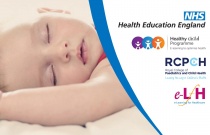Serving Diverse Families in Social Services
Industry Specialists
1.00 Hours
This CEU course provides an overview of cultural competence for organizations serving children and families from diverse ethnic and racial backgrounds by exploring: what constitutes as cultural competence; how cultural competence can be enhanced within organizations; cultural competence among individual staff and service provide....
Preparing for your annual staff appraisal: employee and manager preparation
Bob Price
1.00 Hours
Annual appraisals are an important part of workforce management and staff development. To improve the appraisal process, the professional interests of the practitioner and objectives of the organisation need to be aligned. Nurses should be well prepared for their annual appraisal so that they can gain the most from it, as well a....
Value of eggs during pregnancy and early childhood
Carrie Ruxton
1.00 Hours
The maternal diet is believed to influence infant health, as does diet in early life following the introduction of solid foods. Eggs, commonly available and low in cost, contain nutrients that may be of benefit during pregnancy as well as during weaning. Key nutrients include vitamin D, folate, iodine, selenium and long-chain n-....
Supporting effective lifestyle behaviour change interventions
Candia Allen
Improving the health of the population, and morbidity and mortality associated with non-communicable diseases, is a national priority. Health education and promotion should focus on avoiding harmful behaviours such as excessive alcohol intake, smoking and poor diet. It is argued that each patient contact should involve health pr....
Understanding and interpreting nutrition information on food labels
Jane DeVille-Almond and Kate Halliwell
Health promotion is integral to the nurse's role. Increasing numbers of people in the UK are overweight or obese and are at increased risk of health problems such as type 2 diabetes, heart disease and certain cancers. Therefore, it is essential to encourage people to make healthier lifestyle choices. This learning module focuses....
The management and treatment of patients with acne
Kathy Radley
Acne is a common skin condition. Acne lesions are classified by their clinical appearance as comedonal (non-inflamed), papulopustular, nodular and conglobate acne, and patients may present with a mixture of these. Evidence-based treatment relies on identifying the types of acne lesions. Effective nursing care includes supporting....
Schedule II Controlled Substances
Industry Specialist
3.00 Hours
This course is based on The Controlled Substances Act and taken from the larger manual Drugs of Abuse. The CSA places all substances which were in some manner regulated under existing federal law into one of five schedules. This placement is based upon the substance’s medical use, the potential for abuse, and safety or dependenc....
The Heart in Detail
Cathy Lockett, RN, MHA, BSN, CCRN-K
6.00 Hours
The NEED TO KNOW Arrhythmias Cardiac Conditions: What is Actually Happening? The ABCs of Cardiac Medications Heart Failure: Which Organs are Really Affected? Did you ever wonder why your patent with a myocardial infarction will have dyspnea? Or have a hard time explaining how beta-blockers work? Or become confused about ejection....
The Generalist's Guide: Pediatric and Adolescent Gynecologic Emergencies
Nirupama K. DeSilva (MD), Kimberly Hoover (MD), and Xiomara M. Santos (MD)
7.00 Hours
The Generalist's Guide: Pediatric and Adolescent Gynecologic Emergencies eModule, developed in association with the North American Society for Pediatric and Adolescent Gynecology, reviews how patients who present to the emergency department have different presenting symptoms, diagnoses, and admission needs than adult patients. T....
Sexual Health Indicators of Risk
Philippa Matthews
0.50 Hours
This session will cover the role that general practice has to play in sexual health care, particularly with those people at risk of sexual health problems such as unwanted pregnancy, sexually transmissible infections (STIs) and cervical cancer. The clinical value of sexual history-taking is introduced. This session has been writ....
Supporting and Working with the Carers of People with Learning Disabilities
Peter Lindsay - Full time GP at Thakur Practice in North Leeds
0.50 Hours
The session aims to increase your awareness of the social situation and circumstances of learning disabled adults.
Supporting People with Visual Impairment
Stella Hornby - Module Editor: Eye Problems
0.25 Hours
This session aims to increase your awareness of the issues surrounding visual impairment and the benefits of specialised rehabilitation. This session was reviewed by Sally Higginbottom and last updated in February 2015.
Sleeping Part 1: Normal Physiology and Common Problems
Helen Heussler - Developmental and Behavioural Paediatrician and qualified Sleep Physician, Mater Ch
0.50 Hours
This session is designed to help you manage the common sleep problems that arise in young children. It covers the normal pattern of sleep and variation in children aged between 0 and 5 years, and also discusses the range of sleep problems that can occur along with a description of their impact on the family.
Typical Development Part 2: First Words and Early Sentences
John Oates - Senior Lecturer in Psychology, Child and Youth Studies, the Open University
0.50 Hours
This session gives an overview of the main aspects of how language typically develops in children. It covers the growth of their vocabulary and their developing understanding and use of grammar.
The Role of the Consultation
Roger Neighbour
This introduction session contains video footage of six well-known GP opinion leaders and writers as they give 'their take' on the place of the consultation in contemporary general practice.
Self Appraisal
Daryl Goodwin
This session describes an approach to self-appraisal, and provides practical tips and guidance about appraisal of consultation performance in primary care.
Working with Local Community Organisations
Asif Afridi and Paramjit Gill
Voluntary and community organisations can help your patients in a variety of ways. This session enables you to match the support needs of people who use your practice with other local organisations that could help them. This session was reviewed by Suchita Shah and last updated in February 2015.
The Patient as Partner in Evidence-Based Practice
Kevork Hopayian
0.50 Hours
In this session, you will learn how to translate evidence from research to clinical practice, assessing the relevance of general findings to an individual, and communicating effectively to arrive at shared decisions. This session was reviewed by Matthew Castleden and last updated in March 2015.
Screening Programmes Part 1: Pregnancy and Newborn
Joanne Harcombe
0.50 Hours
This session will describe and discuss the following three NHS antenatal and newborn screening programmes: screening for sickle cell and thalassaemia; newborn blood spot screening; and screening for infections in pregnancy.
Taking and Drawing a Genetic Family History - Theory
Peter Farndon
0.50 Hours
This session covers taking and drawing a genetic family history, an important skill in primary care practice to identify patients with, or at risk of, a genetic condition.
Transition from Child-centred to Adult-orientated Healthcare
Janet McDonagh, Anita Morgan and Marcelle Sousa
This session explores the importance of transitional care, as young people with long-term conditions and/or disability negotiate the move from child-centred to adult-orientated care.
Teaching Groups and Workshops
Deborah Saltman
0.50 Hours
This session will help you to refine your presentation skills, enhance your confidence, develop audience interest and increase audience involvement when you are speaking to a group of people.
The Cervical Screening Programme
Philippa Matthews
0.50 Hours
This session describes how to take a cervical screening test, manage the results in the UK context and ensure that women are not lost to the system.
Sports Medicine in Primary Care
George Bownes
0.50 Hours
This session discusses overtraining syndrome and how a patient can minimise the risk of injury. It will also cover the principles of sports nutrition and hydration and when to utilise sports medicine services. This session was reviewed by Ruth Stow and updated in March 2017.
Step III: Administration Techniques – Epidural, Intrathecal
Jonathan Oates
0.50 Hours
This session looks at the action of opioids given by epidural and intrathecal routes and considers the key adverse effects; it will enable you to execute a management strategy for these adverse effects.























